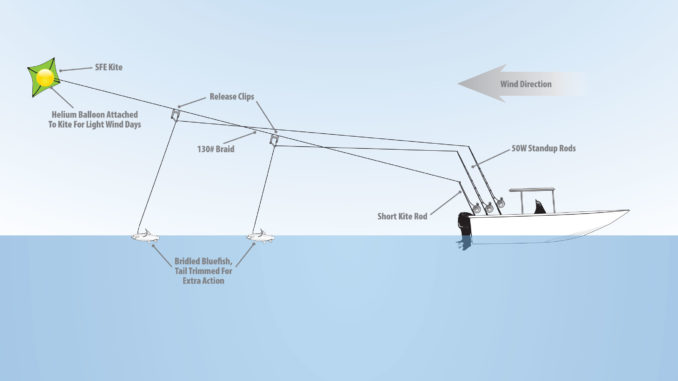
When the fish spread out and the bite slows down, which can happen later in the day, Capt. Brant McMullan has another trick to hook up. Brant, his brother Barrett, and his father Rube run a charter-fishing operation out of Ocean Isle Fishing Center, but they make several trips each winter and spring to the Outer Banks to do battle with giants on their 32-foot center console. They will jig and pop in the morning but like to fly a kite to finish out their trips.
Brant McMullan uses an SFE kite setup, similar to the one he uses to target king mackerel out of Ocean Isle Beach and sailfish in Florida. For bluefin, he simply tightens the tension on his release clips and uses a large bluefish for bait. The bluefish gets bridled to a circle hook, and the kite holds the bait on the surface, where it thrashes and attracts tuna up from the deep. For finicky fish, nothing works better than a live bait. To simulate the bait being crippled, McMullan often trims the tail fin of the bluefish, meaning that the fish has to kick that much more.
Using 30- or 50-wide reels on stand-up rods, McMullan will use two or three bluefish at a time on his kite setup. The fish can’t actually see the leader or the hook, so it is possible to use heavier leader that is normal for live bait fishing. A bluefin hitting a bluefish on the surface looks like a hand grenade going off under the kite. With the circle hook, all the angler has to do is make sure the line stays tight and keeps consistent drag on the line. Almost every time, the hook will rotate and catch the tuna in the corner of the mouth, and there is very little chance of the hook pulling out. Additionally, fish are very easy to release on circles. Simply clip the line as close to the hook as possible and let the fish swim off, if this is not a fish that will be taken home and eaten.



Be the first to comment